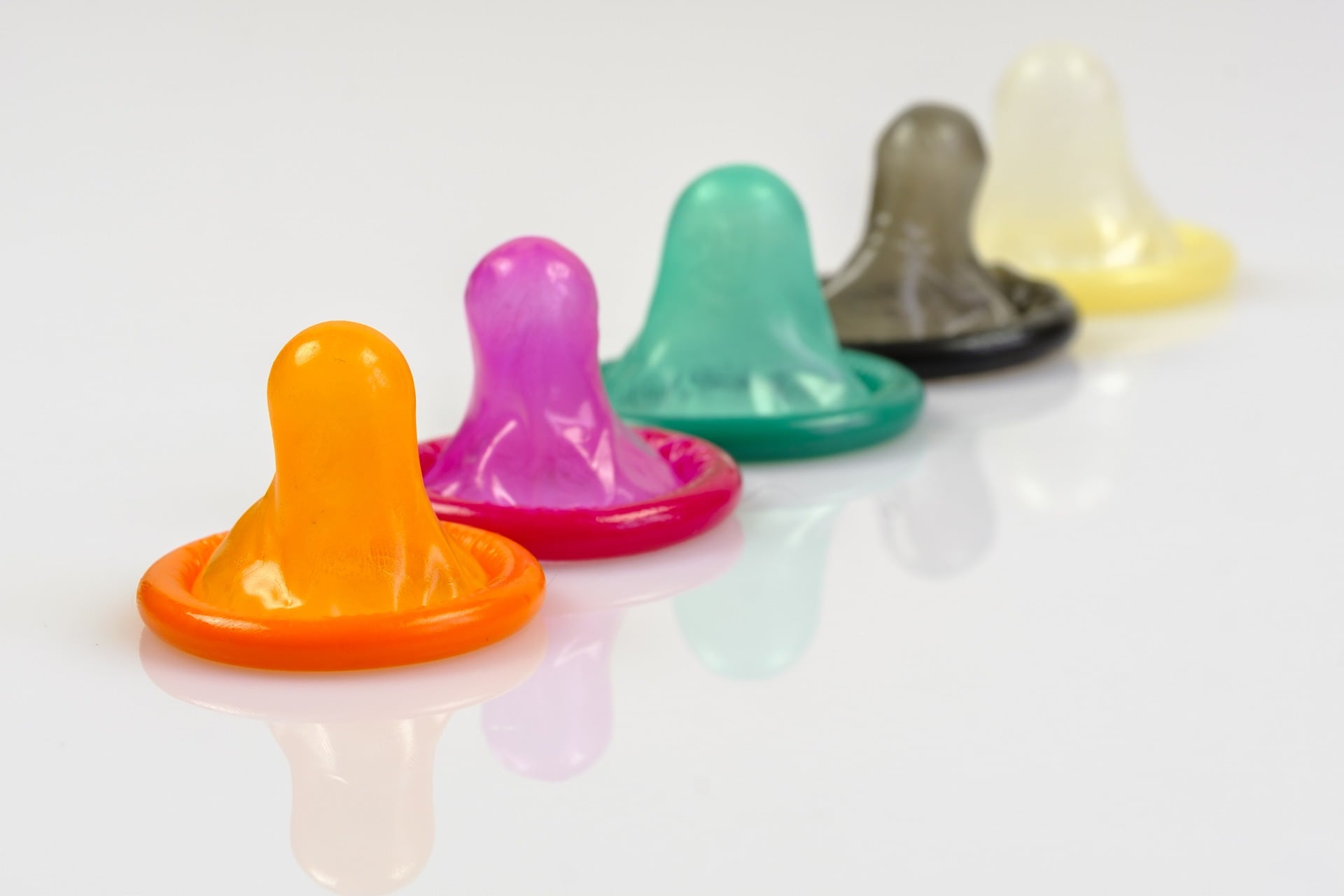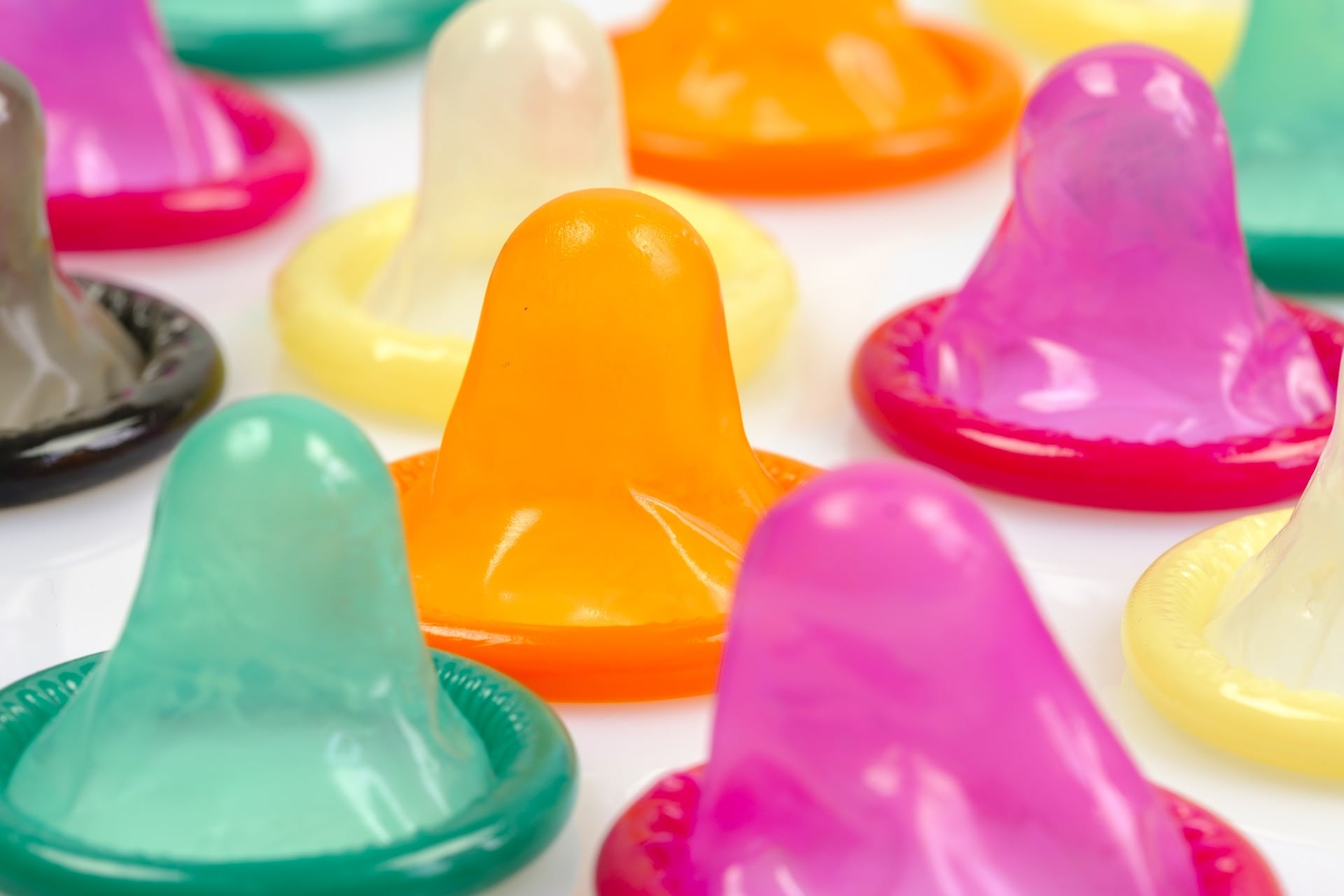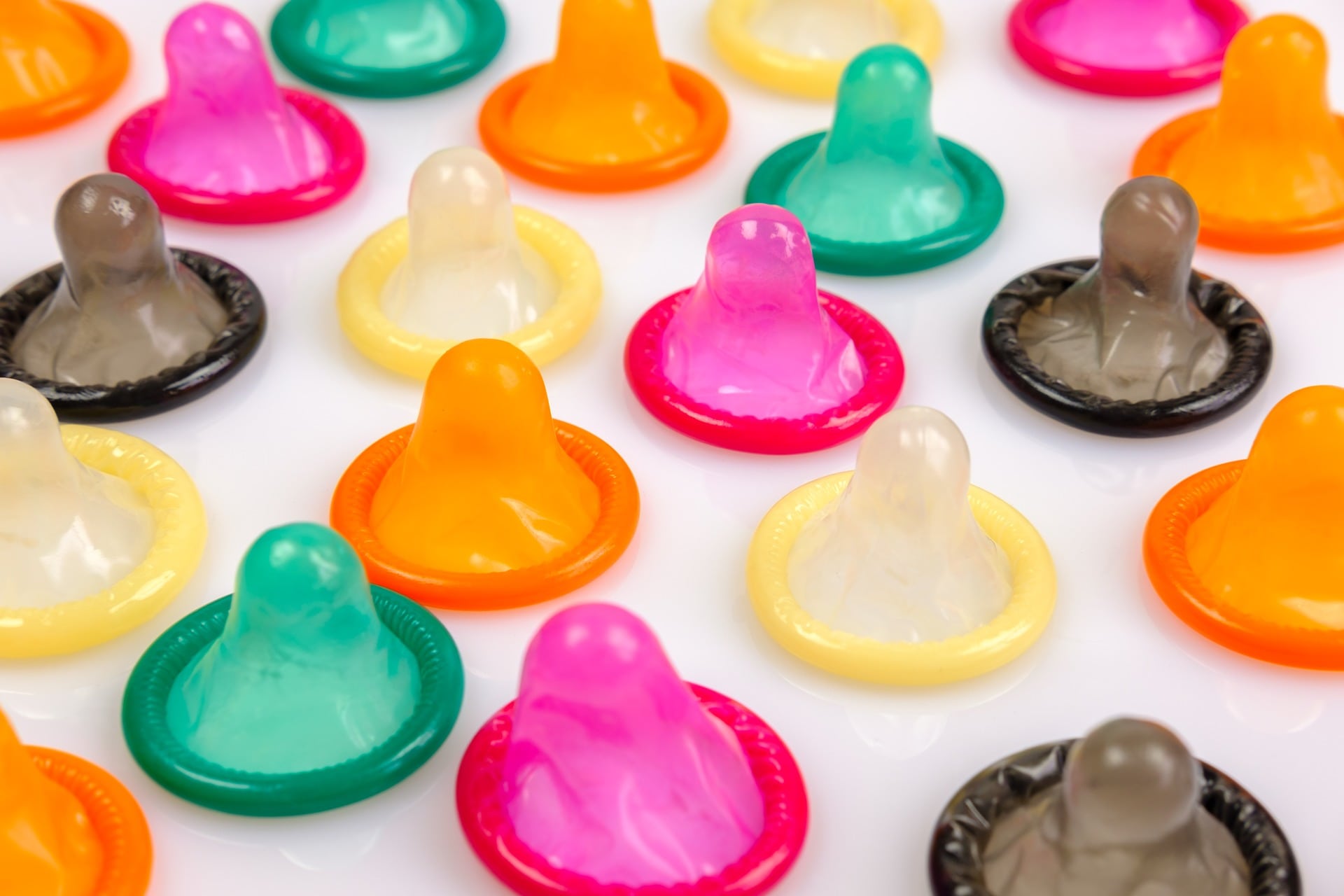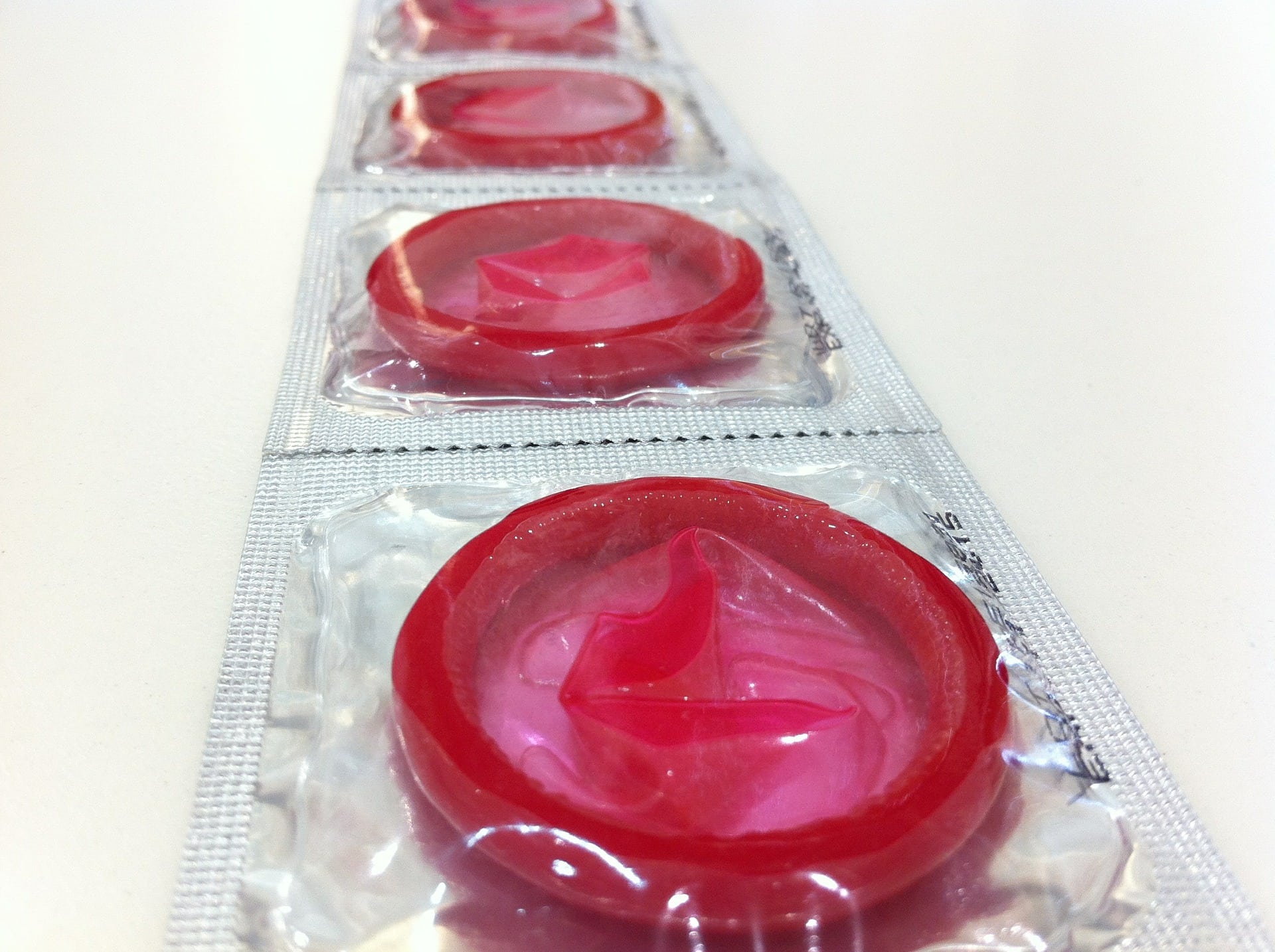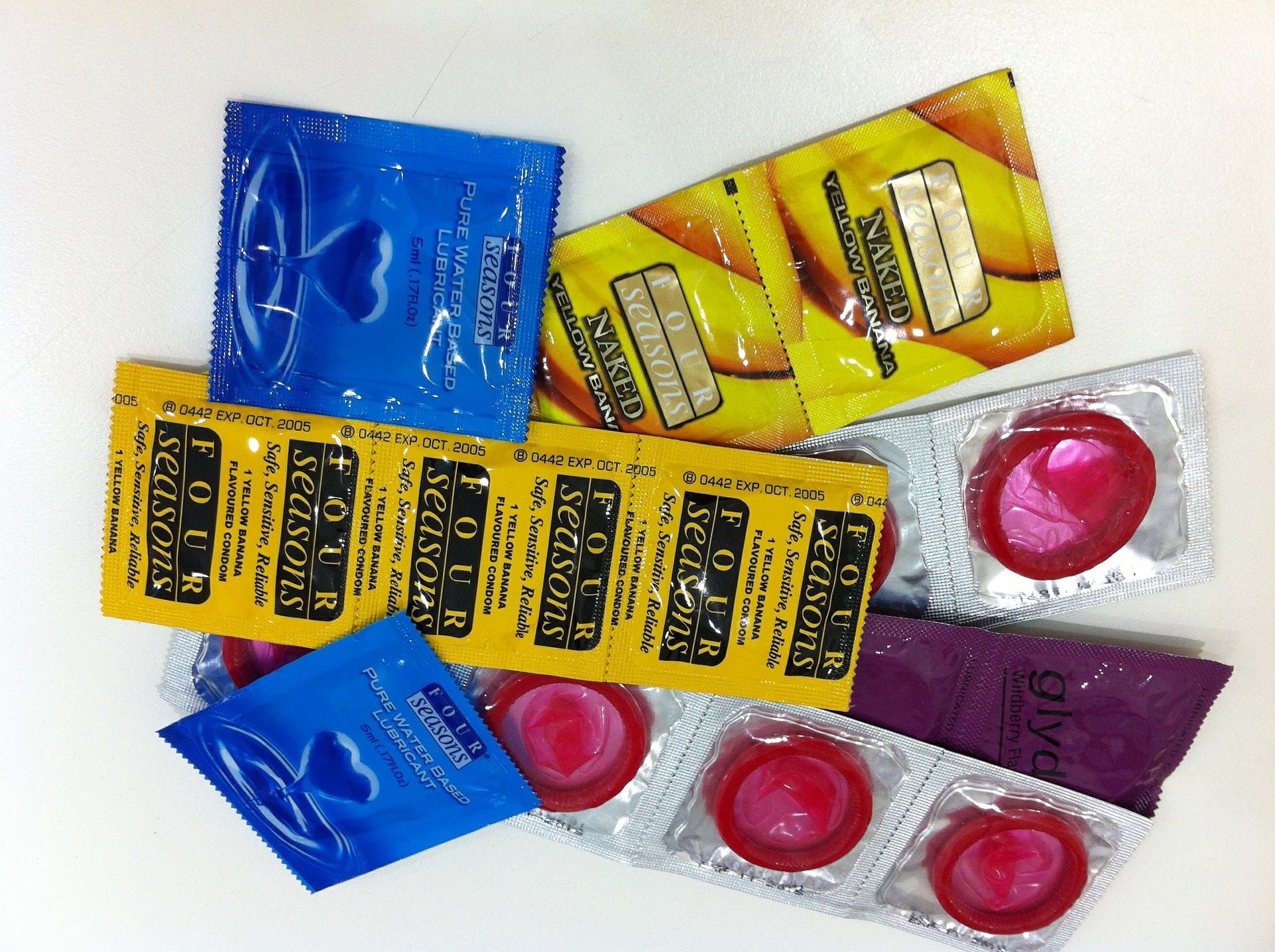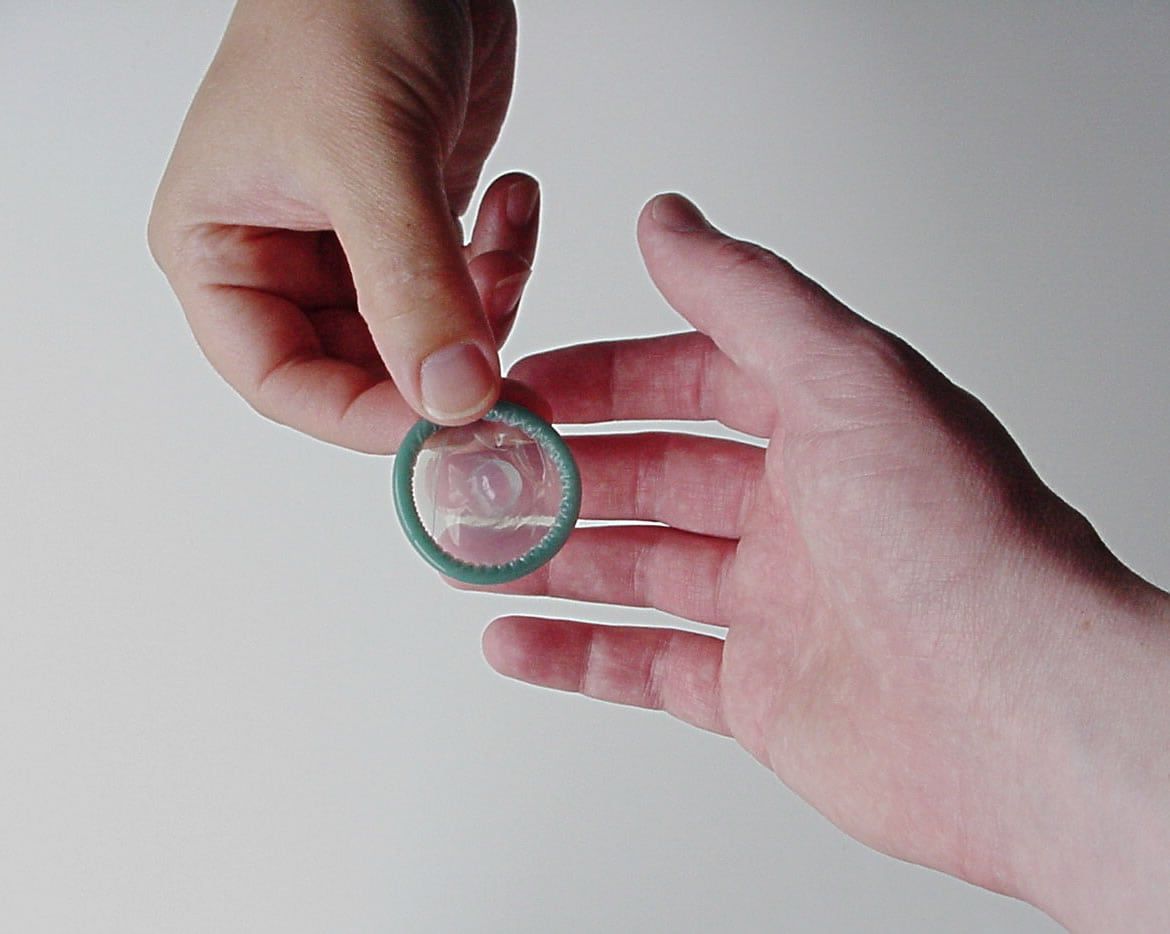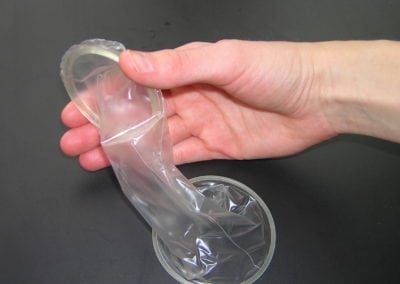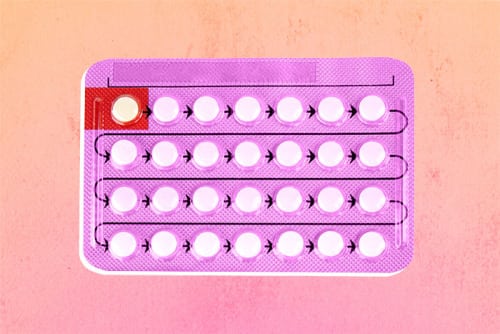Birth Control 101 is a multi-part series covering everything you need to know about birth control. It has all the details you need to make the best decision for your body, like how each method works, the pros and cons, effectiveness, cost and where to get them. After we’re done, you’ll basically be an expert, and you’ll definitely be able to make an informed decision about how to stay safe when you’re having sex.
This segment covers everything you need to know about the most common barrier method, male condoms, including how to put them on, take them off, and what to do if they break.
Check out our Birth Control 101 section for details on every birth control method, and Birth Control Basics for a quick and dirty overview.
External / Male Condoms
What are they?
Traditional condoms are a barrier method of birth control that also protect against STDs, some STIs, and HIV. They are typically made of latex, but are also made of polyurethane (a thin plastic), natural lambskin, or other synthetic materials for those who may be sensitive to latex. They are shaped kind of like a deflated penis, and are worn on a the penis during sex. If you’re allergic to latex, you can get latex-free alternatives. Click for more info.
Condoms are available in a variety of sizes, styles, colors, and flavors. Some contain spermicide (which kill sperm), lubricant (to keep sex smooth), or a sensation gel, which can give warming, cooling, or tingling effects.
How do they work?
Condoms are rolled over the erect penis before sex to prevent body fluids from mixing and sperm from entering the vagina during sex. This prevents pregnancy and protects both partners against STD’s and HIV, as no bodily fluids are mixing at all. It also protects against STIs, except for those that are transmitted via skin-to-skin contact (like herpes). Unlike hormonal birth control methods, condoms must be used properly every time you have sex in order to be the most effective.
How to Put On a Condom
- Before you even open the condom, make sure to check the inspiration date. Expired condoms can be thin, brittle, and dry – and are much more likely to break. Also make sure that the wrapper does not look damaged, with any tears or holes.
- Open the wrapper gently and cleanly along one end, making sure not to damage the condom inside. If the condom looks torn, brittle, dry, stiff, sticky, or otherwise messed up – get rid of it, and use another.
- Make sure that your partner is hard before attempting to put the condom on. Putting a condom on a flaccid penis is like trying to put a wet noodle through a pin hole. It’s not gonna work.
- Put the condom on way before your partner’s penis gets anywhere near your vagina. This will be the most effective in preventing the exchange of bodily fluids, and keeping their pre-cum totally away from your lady bits.
- The condom will be rolled up into a ring shape. Using your finger, before putting it on, gently unroll it a teeny tiny bit to figure out which way is the correct way to put on the condom.
- Many condoms come lubricated, but if not (or even if it does), it’s a good idea to put a drop or two of water-based lube inside to help the condom slide on, and also give additional sensation to your partner.
- Pinch the tip of the condom to remove any air and leave a little place to collect their semen. Place the still-rolled-up condom over the tip of their penis. If your partner is uncircumcised, be sure to pull back their foreskin before rolling on the condom.
- Still holding the tip of the condom, unroll it over their penis completely, until it can not be unrolled any more. Avoid tearing the condom with your fingernails, a ring, a bracelet, or anything else that might be sharp.
- Smooth out any air bubbles, and double check to make sure there’s enough room at the tip, and for the condom to move around and give slightly. If it is too tight, it may break.
- If the condom is un-lubricated, lube up the outside. Once you’re ready, let the sexscapades begin!
How to Take Off a Condom
- After your parter is finished, make sure he pulls out before going soft. If he goes soft, their semen may leak out and make contact with you.
- Gently pull the condom off, with one hand at the tip, and another at the base, using gravity to your advantage so that no semen spills out.
- Throw the condom away in a trash can. Feel free to wrap it up with a tissue for everyone’s happiness. But, don’t flush condoms down the toilet! It’s really bad for the water supply, the environment, and your plumbing.
- When you’re ready to go again, make sure to use a brand new condom. Also make sure that he washes their penis with soap and water before your next session.
What to Do if a Condom Breaks
A condom breaking is probably the scariest thing that can happen to a girl, aside from a positive pregnancy or STD test, which was probably caused by condom failure in the first places. If a condom breaks, stop having sex immediately. Guys can tell when the condom breaks instantly, and you might be able to, too – since it will literally feel like there’s no longer a barrier between you. Usually, the only thing you’ll need to do is replace the condom. However, if semen leaks out and touches your vagina, you’ll need to take some extra precautions. First, wash it away with soap and water. Then, use some spermicide if you have it handy. Finally, check out some emergency contraception options if you’re not on a back-up birth control. Emergency contraception can be used to prevent pregnancy up to five days after unprotected sex – but the sooner you use it, the more effective it will be. If you’re concerned about STDs or STIs, head to your gynecologist for an examination.
Tips for Using Condoms
Aside from the standard precautions when putting on and removing condoms, there a few tips that will help to make the experience more pleasurable and safe for both of you.
- Practice makes perfect with condoms, and literally everything else in life. So, give it a go with a trial run before doing it for real. Try it out on a banana, bottle, cucumber, or any other phallic object you have lying around. Or, try it out on your partner for the real thing. Also, if you’re too embarrassed to talk about using condoms with your partner, you probably shouldn’t be having sex with them. And if they’re pressuring you to have sex without a condom, then you definitely shouldn’t be having sex with them. At all. Ever.
- Keep condoms in a cool, dry place by themselves. Don’t keep them in your back pocket or wallet for long periods of time. Don’t keep them in your glove compartment, because of temperature changes. And definitely don’t keep them in a crowded drawer where weird and pointy objects will be resting and poking up against them. And it should also go without saying, but keep them each in their individually designated wrapper.
- Only used water-based lubes with condoms. Oil and silicone based lubricants can degrade the materials of condoms, and cause them to deteriorate or break. Also, it’s 2014. Don’t use any bullshit lubricants like vaseline, petroleum, creams, lotions, butter, canola oil, vegetable oil, or anything else from your kitchen or medicine cabinet. Spend the extra $5 on a decent bottle of lube, or use spit if you must.
- Never “double up” and use more than one condom at a time. Using two condoms at the same time not only reduces sensation, but can cause extra friction and encourage both condoms to tear or break completely
- Never re-use a condom. First of all, that’s just gross. Second of all, it’s unsafe. One condom per erection (unless the first one breaks or is taken off).
Effectiveness
When male condoms are used perfectly, they are 98% effective. When used typically (imperfectly), they are only 82% effective.
Pros
- Condoms are the most popular method of birth control and STD prevention out there. They are effective, cheap, and easy to find.
- Male and female condoms are the only birth control methods that also protect against STDs, HIV, and some STIs (aside from Lambskin condoms, which can still transmit infections).
- Condoms can be used as a “back up” method of birth control for extra protection.
- Condoms are easy to use, store, and remember. They are also easy to carry and are disposable.
- There are virtually no side effects. Only 1 or 2 percent of people are allergic to latex, and even then, there are alternative condoms available to use instead.
- Condoms can help with premature ejaculation. If your partner is at the finish line before the race even starts, they will help him to last longer.
- If you’re skilled in the art of seduction, you can make putting on a condom part of sexy foreplay. Put it on as part of a hand job tease, or with your mouth for an even hotter blow job tease.
Cons
- The primary complaint about condoms is loss of sensation and discomfort. Often, this is a guilt-trip tactic used to try to convince women not to use a condom during sex. In reality, sex still feels awesome with condoms, and they’re only uncomfortable if they’re way too tight… in which case, there are condoms out there big enough to fit your fist. If your partner is pressuring you not to use a condom because they’re “uncomfortable”, there’s a very easy solution — don’t have sex with him.
- If your partner is being genuine about significant discomfort or loss of sensation, there are still some solutions. Internal or female condoms (while slightly less effective) are less restricting and will allow for more sensation for both of you. You can also try out different sizes, textures, and lubrications to find the perfect fit for you and your partner. You can even practice using condoms during foreplay, or solo, so he can get more used to the sensation before having sex. If he’s serious and adamant about not using condoms, though, kick him to the curb. Their 5 minutes of pleasure is not worth your lifetime of agony from pregnancy, an STD, or simply an unnecessary memory of a douchebag.
- Condoms provide the best protection against STDs, HIV, and STIs, but the protection is not perfect. Herpes, syphilis, chancroid, HPV, and other STIs can be transmitted via skin to skin contact, which is not necessarily covered by the condom. Always be sure to protect yourself, especially with a new partner.
- A very small percentage of people are allergic to latex. If this is the case for you or your partner, there are non-latex condom options available, including female condoms. But be aware that Lambskin condoms allow for the transmission of STIs.
- Condoms are often used improperly – allowing semen to get inside the vagina. Be careful not to tear, rip, or break the condom – and also make sure not to spill anything out during removal. User error is the biggest reason why condoms can be ineffective. If takes an effort to use them right every time – but it’s totally worth it.
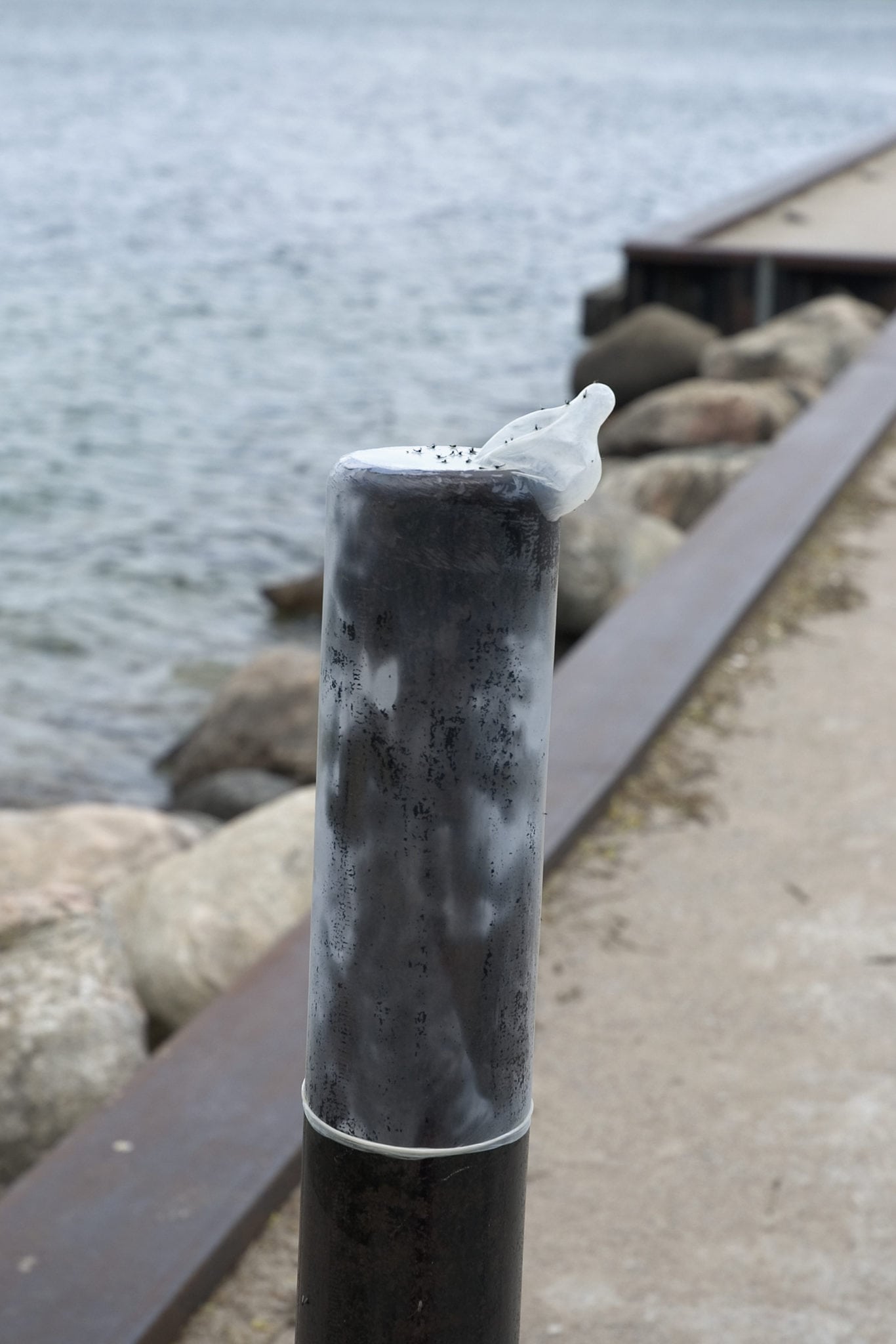 Next time your partner complains that condoms are too tight or uncomfortable, remember how fucking huge this pole is. He only has the right to complain if he can surpass it.
Next time your partner complains that condoms are too tight or uncomfortable, remember how fucking huge this pole is. He only has the right to complain if he can surpass it.
Cost
About a dollar a condom, $5 for a 3-pack, $12 for a 12-pack, and free at Planned Parenthood, health departments, or your school’s health center! Sometimes, bars and clubs also have free condoms, or they are given away as promotional materials.
Where to Get Them
You can purchase standard condoms over the counter at your local pharmacy, drugstore, or grocery store, or find high-quality and specialty condoms online at one of our favorite retailers, Lovehoney. A limited selection is also available for free at Planned Parented, health departments, and your school’s health center.
Don’t stop there… learn more about the other methods so you can find the perfect fit! Check out these articles in our Birth Control 101 series.
Birth Control 101: The Basics of Birth Control
Birth Control 101: The Pill
Birth Control 101: The Patch
Birth Control 101: The Ring
Birth Control 101: The Shot
Birth Control 101: The Implant
Birth Control 101: Hormonal and Copper IUDs
Birth Control 101: Male Condoms
Birth Control 101: Cervical Cap
Birth Control 101: Diaphragm
Birth Control 101: The Sponge
Birth Control 101: Spermicide
Birth Control 101: Pull Out Method
Birth Control 101: Emergency Contraception (Plan B)
Common Birth Control Myths
Sources “Birth Control Methods.” Bedsider Birth Control Support Network. Bedsider, n.d. Web. 27 July 2013.
“Birth Control Methods.” Planned Parenthood. Planned Parenthood Federation of America, 2013. Web. 27 Jul. 2013.
“Condomology: Facts, Stats, and More about Condoms and Sexual Health.” American Sexual Health Association, n.d. Web. 10 Dec 2013.
Condomology Fact Sheet. American Sexual Health Association, n.d. Web. 10 Dec 2013.
Condomology: Making Informed Decisions. American Sexual Health Association, n.d. Web. 10 Dec 2013.
How to Put on a Condom. Planned Parenthood Video.
“The Ultimate Guide to Safer Sex.” Greatist, n.d. Web. 27 July 2013.
“Types of Contraception.” Advocates for Youth, 17 Jan. 2012. Web. 27 July 2013.
